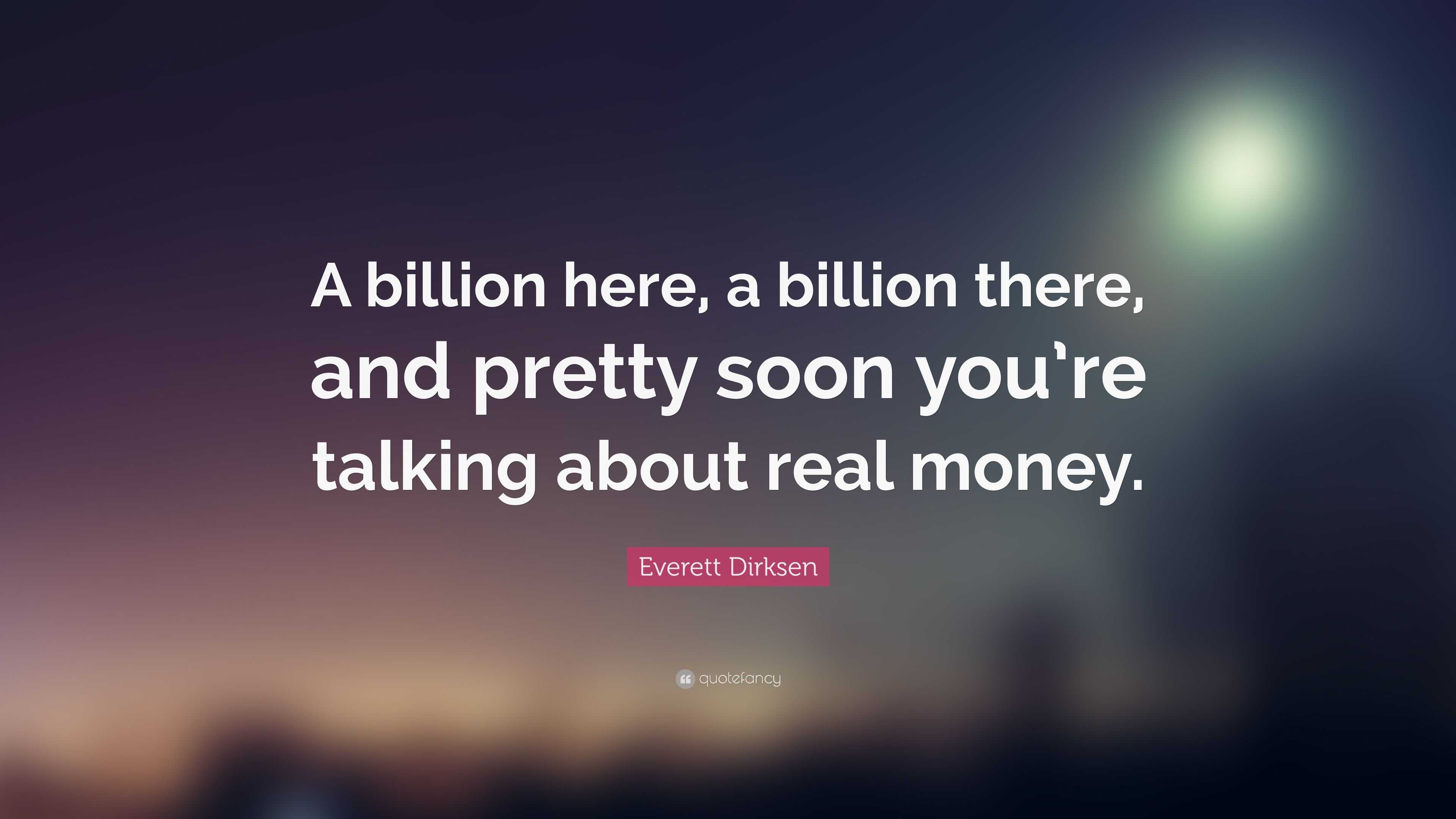- Senator Soon You're Talking About Real Money Today
- Senator Soon You're Talking About Real Money Today
As with most really neat sayings, the original (with billions, instead of trillions) is misattributed, in this case to the late Senator Everett Dirksen, a conservative Republican who nonetheless helped to write the 1964 Civil Rights Act. The saying can be traced back to an unsigned New York Times article in 1938, which said ““Well, now, about this new budget. It’s a billion here and a billion there, and by and by it begins to mount up into money”. This in turn improved on earlier versions going back at least to 1917
US GDP today (Over $20 trillion) is around 250 times as high, in dollar terms, as it was in 1938, so replacing billions with trillions isn’t much of a stretch.
Senator Soon You're Talking About Real Money Today
EMD Papers, Republican Congressional Leadership File, f. 25 But the 'and pretty soon you're talking real money' is missing. In another close call, the New York Times, January 23, 1961, quoted Dirksen: 'Look at education – two-and-one-half billion – a billion for this, a billion for that, a billion for something else. May 19, 2021 ARTICLE. Date: ArticleType: 5/19/2021: Chamber: A Billion Here, A Billion There and Pretty Soon, You’re Talking Real Money: The remarkable and legendary US Senator from Illinois, Senator Everett Dirksen, was noted as saying this line during a discussion of a spending bill before the Senate in the 1960s: “A billion here, a billion there and pretty soon, you’re talking real money.”.
With that in mind, what should we think about the $2.4 trillion pandemic relief package, and the likelihood of huge demands for public expenditure stretching well into the future? And how much of this analysis is applicable to the world as a whole, where large scale government responses have been the norm rather than the exception.

The simplest way to finance a public expenditure program is to “print money”, or, more usually in a modern economy, to create monetary reserves that can be used to buy government bonds or other financial assets (so-called “quantitative easing”). That in turn means the government can spend, or lend, money without a net increase in the debt owed to the public (or to overseas bondholders). The magnitude can be measured by the monetary base.
The scope to expand the monetary base is limited, but more than enough to cover the immediate needs of the pandemic response. The response to the GFC led to an expansions of the monetary base from $1 trillion to $4 trillion between 2009 and 2015, after which it was wound back by about $1 trillion. It’s grown by nearly $2 trillion (about 10 per cent of GDP) in response to the pandemic, and more is likely to come
Senator Soon You're Talking About Real Money Today
The ultimate constraint on money creation is inflation. That hasn’t been a problem lately and (as I’ll argue in more detail later) the world is in need of a fair bit of inflation, probably at an annual rate of about 4 per cent for the foreseeable future. It’s unclear how much expansion of the monetary base would generate this outcome, while avoiding the risk of a resurgence of inflation like that of the 1970s. But looking at the scale of the response that’s going to be needed for a meaningful Green New Deal (I’d estimate at least 5 per cent of GDP every year for the next decade at least), the amount that can be financed through money creation will be nowhere near enough. Substantial reductions in private consumption and investment will be needed to make room for the required public expenditure, and that can only be achieved through a combination of taxation and debt. More on this, and on global response soon, I hope.